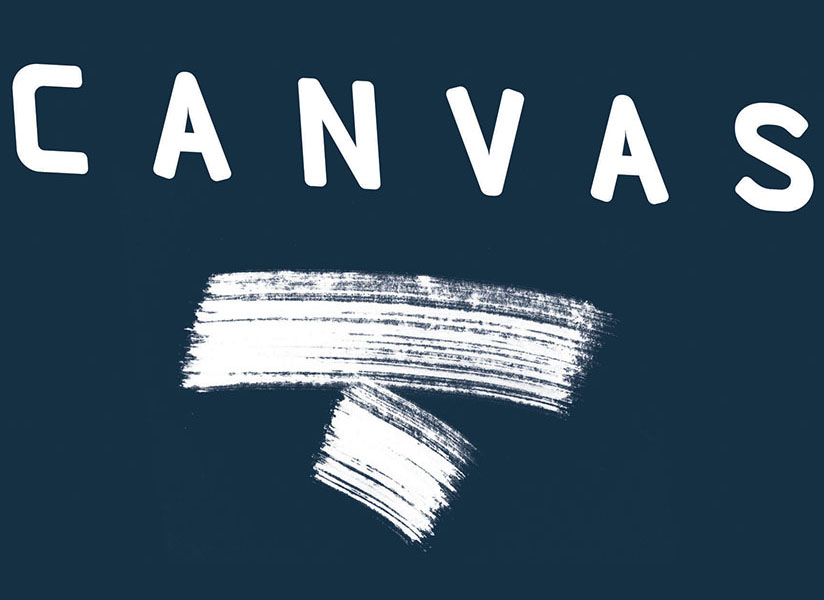Sam Mogelonsky is a Toronto-based artist, curator, designer, and arts professional with an indefatigable enthusiasm for Canadian art and Jewish culture. As an artist, Sam uses embellishment to speak to notions of craft and decoration, while also engaging in the dialogue between the mass-produced and the handmade. (Sam’s photo above is actually a detail of one of her own sculptures.)
Sam co-curated two recent exhibitions (with Ruth Jones). Glimmers of the Radiant Real featured work with “glistening, shining surfaces.” In September, Drawn to the Horizon: The Gift of Ronnie Kaplansky opens at the Art Gallery of Northumberland. Finally, Sam is the Director of Arts, Culture and Heritage for the UJA Federation of Greater Toronto and oversees with the Kultura Collective, a network of contemporary Toronto-based Jewish arts, culture and heritage organizations.
This week, Sam shares with us the artists who inspire how own creative work: “I am drawn to artists who consider the absence or presence of the body, like Eva Hesse and Louise Bourgeois. This selection from my own community — Jewish, Toronto-based artists — are working across sculpture, painting, performance, photography and video to challenge our experience of the body and the world around us.”
Ellen Bleiwas

Ellen Bleiwas and I have enjoyed long conversations about materials, feel, touch and careful looking. Her work is meditative — her process involves carefully and methodically repeating a single action to generate biomorphic forms. Her work examines both the interior and exterior of a surface, causing the viewer to question their relationships to familiar materials such as felt, beeswax or latex. Her exhibition Lithic Innards at The Robert McLaughlin Gallery in Oshawa was one of the last in-person exhibitions I saw before the 2020 lockdown. It required visitor interaction with the sculptural forms and just wouldn’t have been the same in an online setting. I hope to visit her works again soon.
Robert Davidovitz

Robert Davidovitz and I have been gallery-hopping buddies since meeting at his solo exhibition at Lonsdale Gallery in Toronto. He describes his works as “paintings,” but to me they live in-between painting, textile, and sculpture. Like an expert cake decorator, he extrudes strands of acrylic paint through a piping bag; once dry, the resulting strands are intricately hand-woven into textiles. He turned to stained glass for the Fentster window gallery in Toronto. Glass is the family business: Rob’s grandfather repaired windows in post-war Vilnius, and his father runs a glass business in Toronto. Rob purposely added small cracks to the panes to reflect the fractured history of the Jews.
Jess Dobkin

I met Jess Dobkin when we worked on the performance project Our Future, Our Fate, Our Fortune at Art Toronto 2017. Jess acted as a spiritual guide for fairgoers, offering “a flip side to the art market where nothing was for sale.” The project was a kind of fortune-teller’s booth that focused on the communal: instead of “What will happen to me,” Jess asked, “What will happen to us?” Jess was amazing: for four days she performed in a flesh-colored body stocking and provided a spiritual foil to the consumerism of the fair. Like her other performance works, this project created a dialogue with the community, allowing for conversation and individual interaction. In September, the Art Gallery of York University in Toronto will open Jess Dobkin’s Wetrospective, a look back at her work and impact on Toronto’s performance art community.
Sorel Etrog

Sorel Etrog (1933-2014) immigrated to Toronto from Israel in 1963 and explored his Jewish identity through sculpture, painting, and drawing. His work had a big effect on me growing up in Toronto. His sculptures are dotted around the city, and his bronze, The Hasidic Head (1959), sits outside my family’s synagogue, Holy Blossom Temple. Coming and going from services, it held my curiosity for those moments before we hurried home. When I worked at the Art Museum at the University of Toronto, Complexities of a Young Lady always made me stop in my tracks. Recently I’ve been reflecting on Etrog’s work for future projects that focus on abstracted bodies and biomorphic forms.
Jessica Thalmann

For years, I have admired Jessica Thalmann‘s work from afar. During lockdown we finally became friends (by way Eva Kolcze, with whom Jessica collaborates on The Time Being, an Instagram project initiated during the pandemic). In her practice, Jessica considers space, monuments, buildings, and ruins. I am especially drawn to her folded works, which use paper to make sculptural forms. Her first museum exhibition, Two Truths and a Lie, was viewable via video due to the pandemic; there’s something odd and yet strangely amazing about an exhibition that uses the lens to question reality.
Ryan Van Der Hout

Ryan Van Der Hout is an image-maker and sculptor who focuses on process-driven projects. His work first caught my eye with the Dark Waters series: the top layer of these double-layered images are perforated to reveal a glimmering lower surface, creating a magical image that shifts as you moved around. And I love his new Collecting Dust series, which presents objects that look as if they have been, well, collecting dust for thousands of years. I find something very lyrical in considering if the beauty of the object is in functionality or neglect. Extinguished also makes me think about celebrations, how much I’ve missed my mother’s massive Passover and Rosh Hashanah meals. I am hoping 5782 brings more feasts together!

